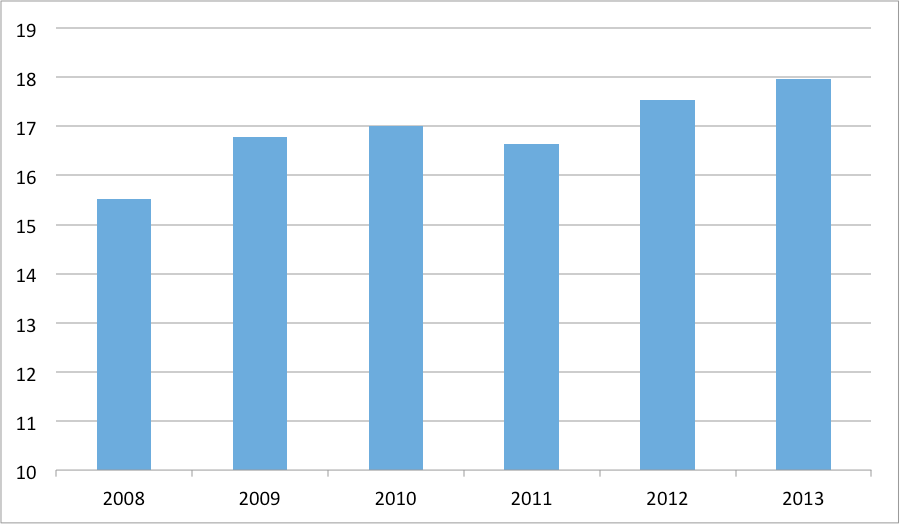Inclusion/Exclusion Criteria Show Minimal Rise
Few topics occasion the lamentations of clinical trial professionals more than the topic of patient inclusion/exclusion criteria in clinical protocols.
Few topics occasion the lamentations of clinical trial professionals more than the topic of patient inclusion/exclusion criteria in clinical protocols. Presentations and publications have pointed to dramatic increases in the number of these criteria. The data sources for these claims have often been proprietary databases, sometimes associated with commercial firms offering products and services to identify and reduce the number of criteria. ClinicalTrials.gov represents an important public data source to establish base line numbers of inclusion/exclusion criteria. A review of these publically available data shows that there is a small increase in the number of commercially funded Phase III inclusion/exclusion criteria, but nowhere as dramatic as is sometimes portrayed in industry press and industry conferences.
ClinicalTrials.gov is a federal database, mandated since 2007 for all organizations conducting studies under FDA auspices. Over time the number of mandated variables has increased. Missing data for any of the variables is often close to zero, and rarely exceeds 3%. Although companies almost always enter fairly extensive information, there is no way of knowing for certain that all inclusion/exclusion criteria have been included. For example companies may simply just stop entering criteria after a self-determined number. However, this seems unlikely since the criteria counts followed a near perfect negative binomial distribution.
Every year there is a statistically significant 0.41 increase in inclusion/exclusion criteria counts in commercially funded Phase III studies. Although the increase is not large, the mere size of the database itself helps to make that even mild changes statistically significant. Two MedDRA therapeutic areas, renal and urinary disorders as well as gastrointestinal disorders, differ statistically significantly from the overall trend, evincing slight declines in the total number of criteria.
Average Number of Inclusion/Exclusion
Criteria per Study by Year

Source: Department of Health Policy and Public Policy, University of the Sciences, Philadelphia, PA
Unlock Commercial Growth through Data-Driven Patient and HCP Insights
May 2nd 2025Leveraging data-driven patient and healthcare provider (HCP) insights, including social drivers of health (SDOH), is essential for life sciences companies to continuously improve patient engagement and commercial success. Mark Rodgers, AVP of Commercial Analytics at Inovalon, discusses how identifying treatment milestones, assessing HCP performance, and segmenting patient populations using SDOH data can drive targeted strategies that improve healthcare outcomes and market access
Improving Relationships and Diversifying the Site Selection Process
April 17th 2025In this episode of the Applied Clinical Trials Podcast, Liz Beatty, co-founder and chief strategy officer, Inato, discusses a number of topics around site engagement including community-based sites, the role of technology in improving site/sponsor relationships, how increased operational costs are impacting the industry, and more.
FDA Approves Nipocalimab for the Treatment of Generalized Myasthenia Gravis
April 30th 2025Approval is based on results from the pivotal Vivacity-MG3 trial in which IMAAVY (nipocalimab-aahu) demonstrated superior disease control throughout 24 weeks when compared to placebo plus standard of care.